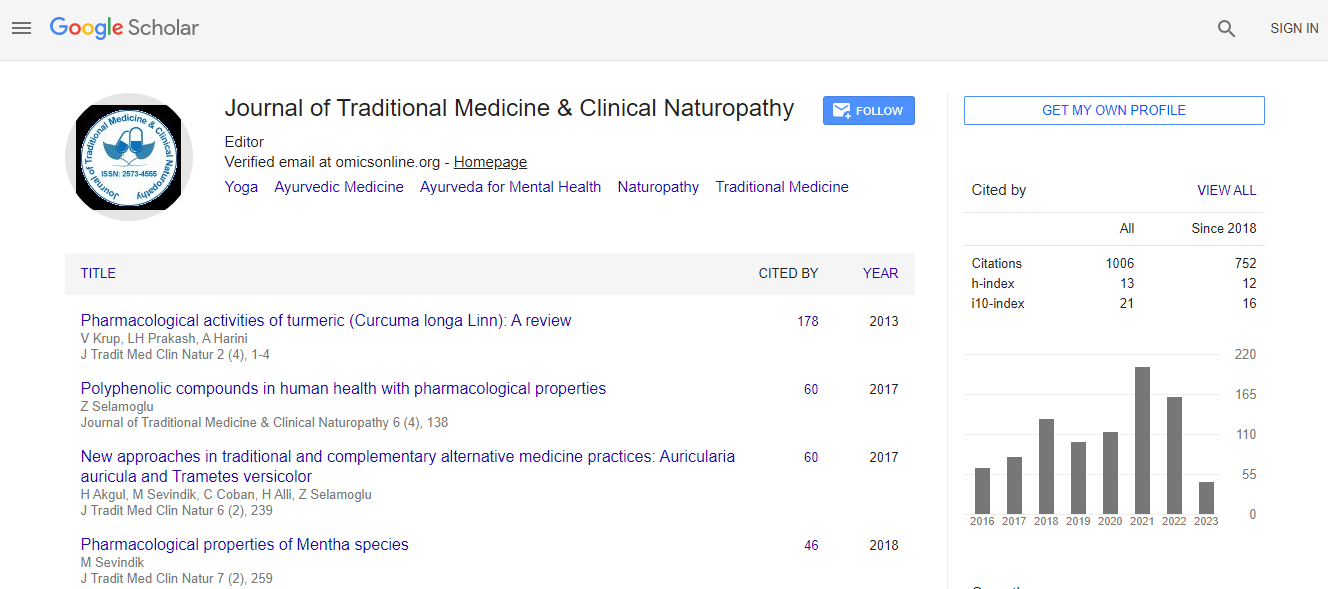Review Article
Traditional Herbal Medicines for Primary Healthcare among Indigenous People in Tamil Nadu, India
| Muniappan Ayyanar* | |
| Department of Botany and Microbiology, AVVM Sri Pushpam College, Poondi – 613503, Thanjavur, Tamil Nadu, India | |
| Corresponding Author : | Muniappan Ayyanar Young Scientist, Department of Botany Pachaiyappa’s College, Chennai-600030 Tamil Nadu, India Tel: +919940376005 E-mail: asmayyanar@yahoo.com |
| Received October 18, 2013; Accepted November 23, 2013; Published November 28, 2013 | |
| Citation: Ayyanar M (2013) Traditional Herbal Medicines for Primary Healthcare among Indigenous People in Tamil Nadu, India. J Homeop Ayurv Med 2:140. doi: 10.4172/2167-1206.1000140 | |
| Copyright: © 2013 Ayyanar M. This is an open-access article distributed under the terms of the Creative Commons Attribution License, which permits unrestricted use, distribution, and reproduction in any medium, provided the original author and source are credited. | |
Abstract
Nature has been a source of medicinal agents for thousands of years, and an impressive number of modern drugs have been isolated from natural sources, many based on their use in traditional medicine. More than hundred publications are available in the literature with ethnomedicinal claims among different tribal communities of Tamil Nadu mainly focuses on plant species used by the tribal people of Tamil Nadu for their primary healthcare needs. Nowadays the farmers in Tamil Nadu are also interested in cultivating medicinal plants such as Glorisoa superba, Coleus amboinicus, Senna angustifolia Andrographis paniculata, Aloe vera, etc for their significance in trade. This review summarizes the traditional uses of commonly used medicinal plants among the tribal communities in Tamil Nadu, India. Extensive literature survey was undertaken from ethnobotany and related journals and other publications to document the medicinal plants commonly used the different ethnic people for their primary healthcare. Western and Eastern Ghats are the main resources for the ethnic people who inhabited in the foot hills and deep forests. These forests hold thousands of medicinal plants which are used by the tribal people for primary healthcare needs. The scientific and vernacular names of plants commonly used by them, family, medicinal properties, part of the plant used and ailments treated are presented along with their major chemical constituents. There is still much we can learn from investigating herbals available abundantly in the forests particularly those which are less well known. This type of research must be promoted as a means for developing countries to understand the potential use of their plant resources, as well as a means to better promote basic healthcare.

 Spanish
Spanish  Chinese
Chinese  Russian
Russian  German
German  French
French  Japanese
Japanese  Portuguese
Portuguese  Hindi
Hindi 
